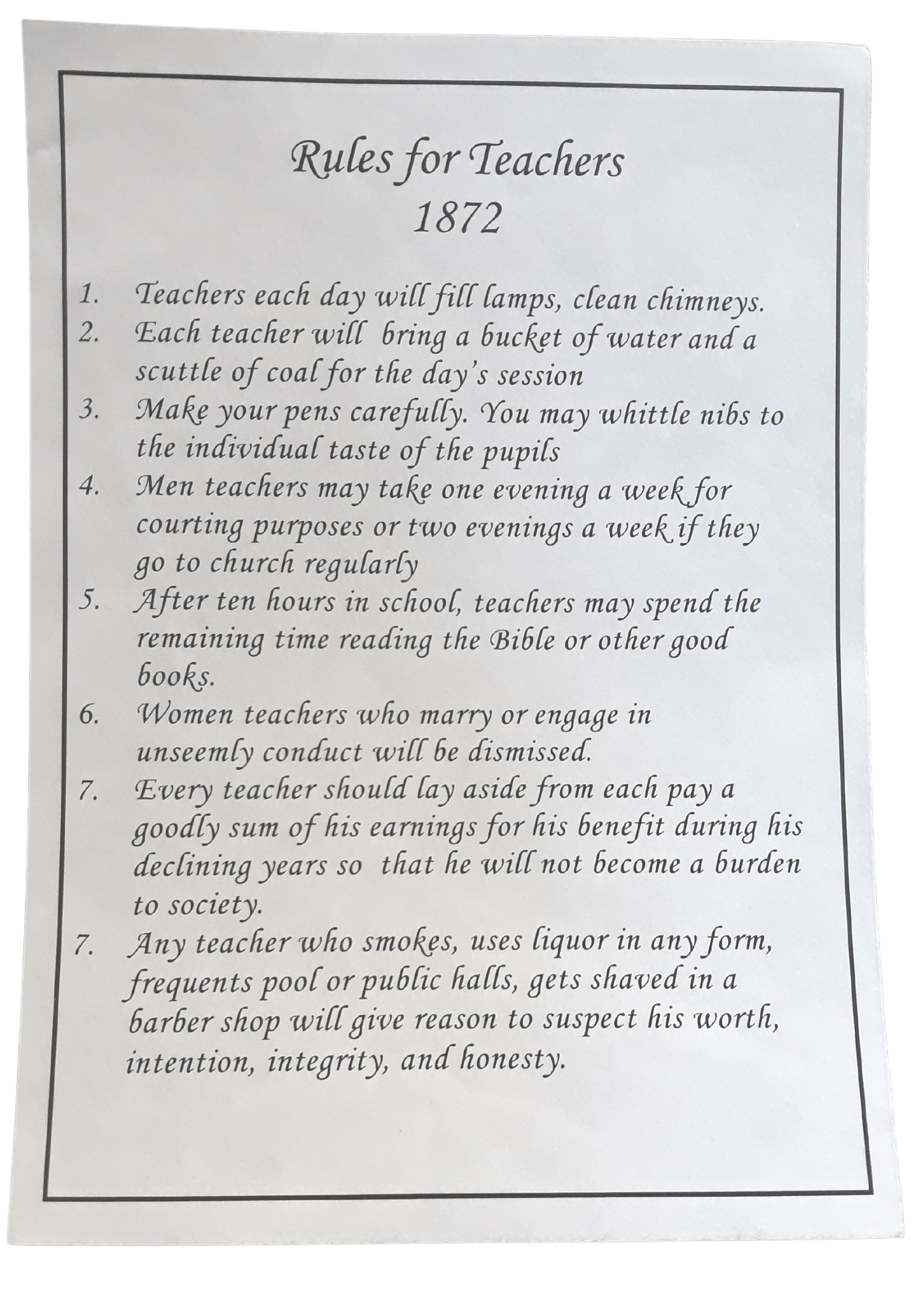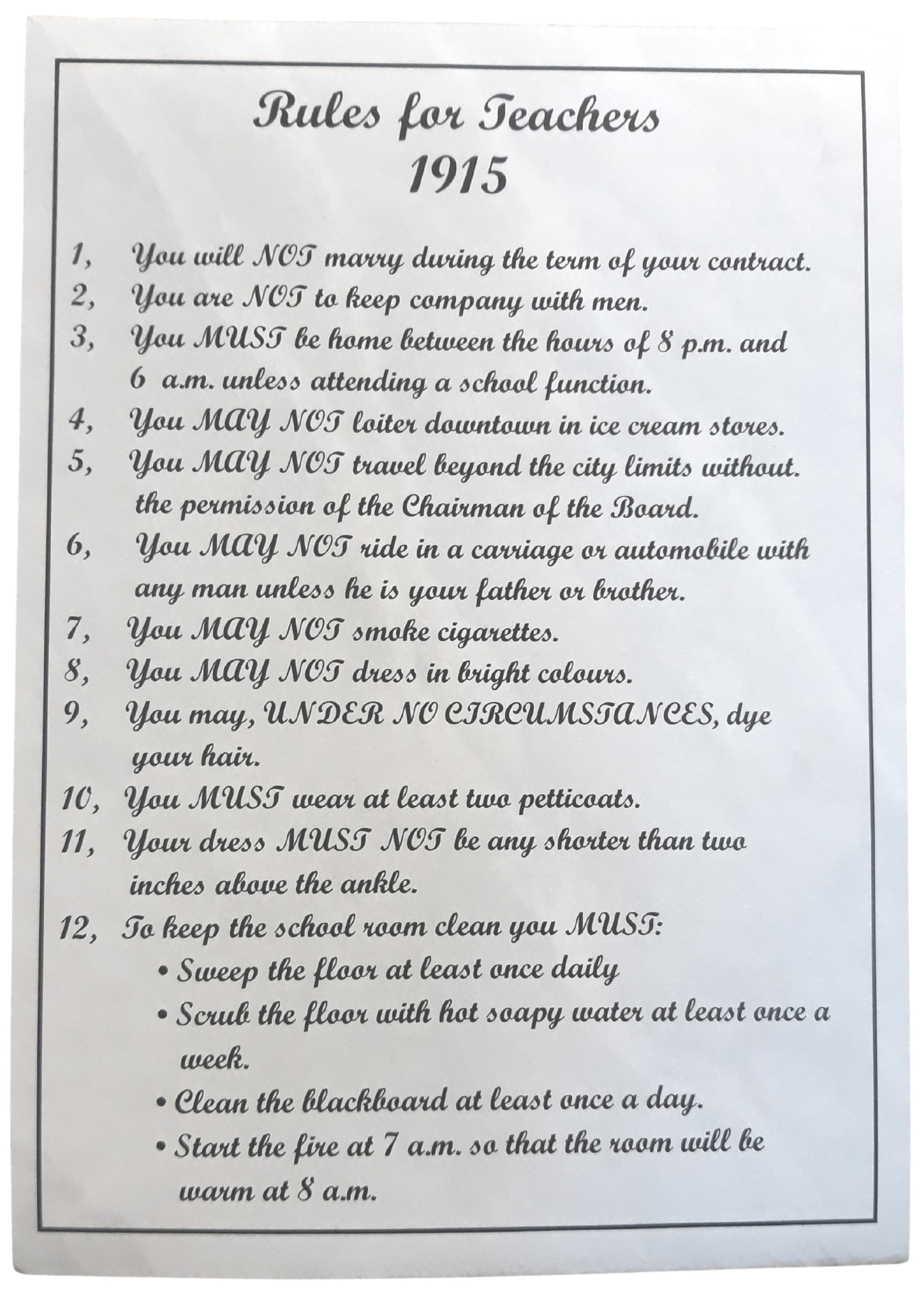Mel Williams, Kiwi North
We all know what a difference a great teacher can make, to our children and to us. They work hard to guide our tamariki on their educational journeys and they do so with some pretty strict rules and restrictions.
I recently made an interesting discovery in the Riponui Pah classroom, situated in the Heritage Park at Kiwi North, that highlights the difference in regulations for the people that taught our grandparents and great-grandparents. Two lists of rules for teachers, one from 1872, the other from 1915. The rules are no longer applicable, and many will make you laugh but they were very real and highly enforced in classrooms not so long ago.
In 1872 both men and women could teach, but the rules were very different depending on gender. Women who married or engaged in “unseemly conduct” were dismissed, while men were entitled to one evening per week for courting purposes or two evenings per week if he attended church regularly.
After 10 hours in school, teachers were allowed to spend their remaining time reading the “Bible or other good books” and it was the teacher’s responsibility to fill lamps, clean chimneys and to supply water and a scuttle of coal to heat the classroom.
My favourite rule from 1872 is that pens, which were made by the teacher, could have nibs whittled to the individual taste of the pupil. It’s nice to think that the student’s preference was considered.
By 1915 some things hadn’t changed much. Female teachers were still forbidden to marry, and it continued to be up to them to maintain a clean and warm classroom environment. Other rules however were very different, and very specific.
Female teachers had to be home between the hours of 8pm and 6am unless attending a school function. They couldn’t keep company with men and couldn’t ride in a carriage or automobile with any man that wasn’t their father or brother. They were also forbidden to leave the city limits without permission from the Chairman of the Board.
Personal appearance was also highly regulated. No bright colours, a dress no shorter than two inches above the ankle, at least two petticoats and “under no circumstances” could a teacher dye her hair.
The rules have certainly changed for our modern day educators. Or have they? Come to think of it, I haven’t seen any teachers loitering in “downtown ice cream stores” recently.

